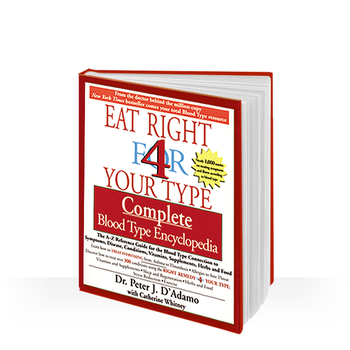A wikipedia of Dr. D'Adamo's research
C O N T E N T SSee Also
DescriptionCytochrome P450 oxidase (commonly abbreviated CYP) is a generic term for a large number of related, but distinct, oxidative enzymes (EC 1.14) important in animal physiology. The cytochrome P450 mixed-function monooxygenase system is probably the most important element of Phase I metabolism in animals (metabolism in this context being the chemical modification or degradation of chemicals including drugs and endogenous compounds). Cytochrome P450 sequence homologs have been determined in all lineages of life, including mammals, birds, fish, insects, worms, sea squirts, sea urchins, plants, fungi, slime molds, bacteria and archaea. P450s are membrane-associated proteins, either in the inner membrane of mitochondria or in the endoplasmic reticulum of cells where they metabolise thousands of endogenous and exogenous compounds. In the liver, these substrates include drugs and toxic compounds as well as metabolic products such as bilirubin (a breakdown product of hemoglobin). Cytochromes P450 are present in many other tissues of the body including the mucosa of the gastrointestinal tract, and play important roles in hormone synthesis and breakdown (including estrogen and testosterone synthesis and metabolism), cholesterol synthesis, and vitamin D metabolism. In most animals, including humans, hepatic cytochromes P450 are the most widely studied of the P450 enzymes. The name refers to "pigment at 450 nm", so named for the characteristic Soret peak formed by absorbance of light at wavelengths near 450 nm when the heme iron is reduced (with sodium dithionite) and complexed to carbon monoxide. Molecular biologyMammalian cytochrome P450 oxidases have about 500 amino acids and a heme (h�m) group at the active site. Most can metabolize multiple substrates, and many can catalyze multiple reactions, which accounts for their central importance in metabolizing the potentially endless variety of endogenous and exogenous molecules. Most animal cytochromes P450 have a cofactor cytochrome P450 reductase and require the nucleoside cofactor NADPH and molecular oxygen (O2) to function. The Human Genome Project has identified 63 human genes (57 full genes and 5 pseudogenes) coding for the various cytochrome P450 enzymes [1]. NomenclatureGenes encoding for the P450 enzymes, and the enzymes themselves, are designated with the abbreviation CYP, followed by an Arabic numeral indicating the gene family, a capital letter indicating the subfamily, and another numerals for the individual gene. The convention is to italicise when referring to the gene. For example, CYP2E1 is the gene that encodes for the enzyme CYP2E1 � one of the enzymes involved in paracetamol (acetaminophen) metabolism. There is a Nomenclature Committee that keeps track of and assigns new names. CYP Families in humansHumans have 18 families of cytochrome P450 genes and 43 subfamilies (Nelson, 2003):
Other specific CYP functions in humansA subset of cytochrome P450 enzymes play important roles in the synthesis of steroid hormones by the adrenals, gonads, and peripheral tissue:
LinksAttribution
|
COMPLETE BLOOD TYPE ENCYCLOPEDIA
The Complete Blood Type Encyclopedia is the essential desk reference for Dr. D'Adamo's work. This is the first book to draw on the thousands of medical studies proving the connection between blood type and disease. Click to learn more
Click the Play button to hear to Dr. Peter J. D'Adamo discuss .
|
The statements made on our websites have not been evaluated by the FDA (U.S. Food & Drug Administration).
Our products and services are not intended to diagnose, cure or prevent any disease. If a condition persists, please contact your physician.
Copyright © 1996-2024, Hoop-A-Joop, LLC, Inc. All Rights Reserved. Privacy Policy | Log In